Oats
“A grain, which in England is generally given to horses, but in Scotland appears to support the people.” Samuel Johnson.
An oft quoted remark from a 1755 dictionary which invariably gets the response “that’s why England has good horses, and Scotland - good people!".
Jokes aside, oats are highly nutritious, survive in hardy conditions (that’s why many of ours are locally grown) and can be used in a huge array of recipes. Here’s our guide to what the different oats are and answers to commonly asked questions such as “are they Raw?”, “are they Gluten Free?” and “what’s a bannock?". You can buy all of the products below from us wholesale meaning the more you buy the cheaper the price per kilo becomes.
Whole Oats
Whole oats have a hard outer shell or hull that must be removed before it’s ready for human consumption. Removing this hard outer hull is not simple or easy, basically you’d need specialist equipment and a very helpful miller (unless you've a centrifugal millstone handy?!) So if you want whole oats to eat, you need to purchase hulled oats, known as ‘oat groats’.
The husks that are separated from the oat groats are used for animal feed, biomass fuel or processed further into insoluble oat fibre.
Oat Groats
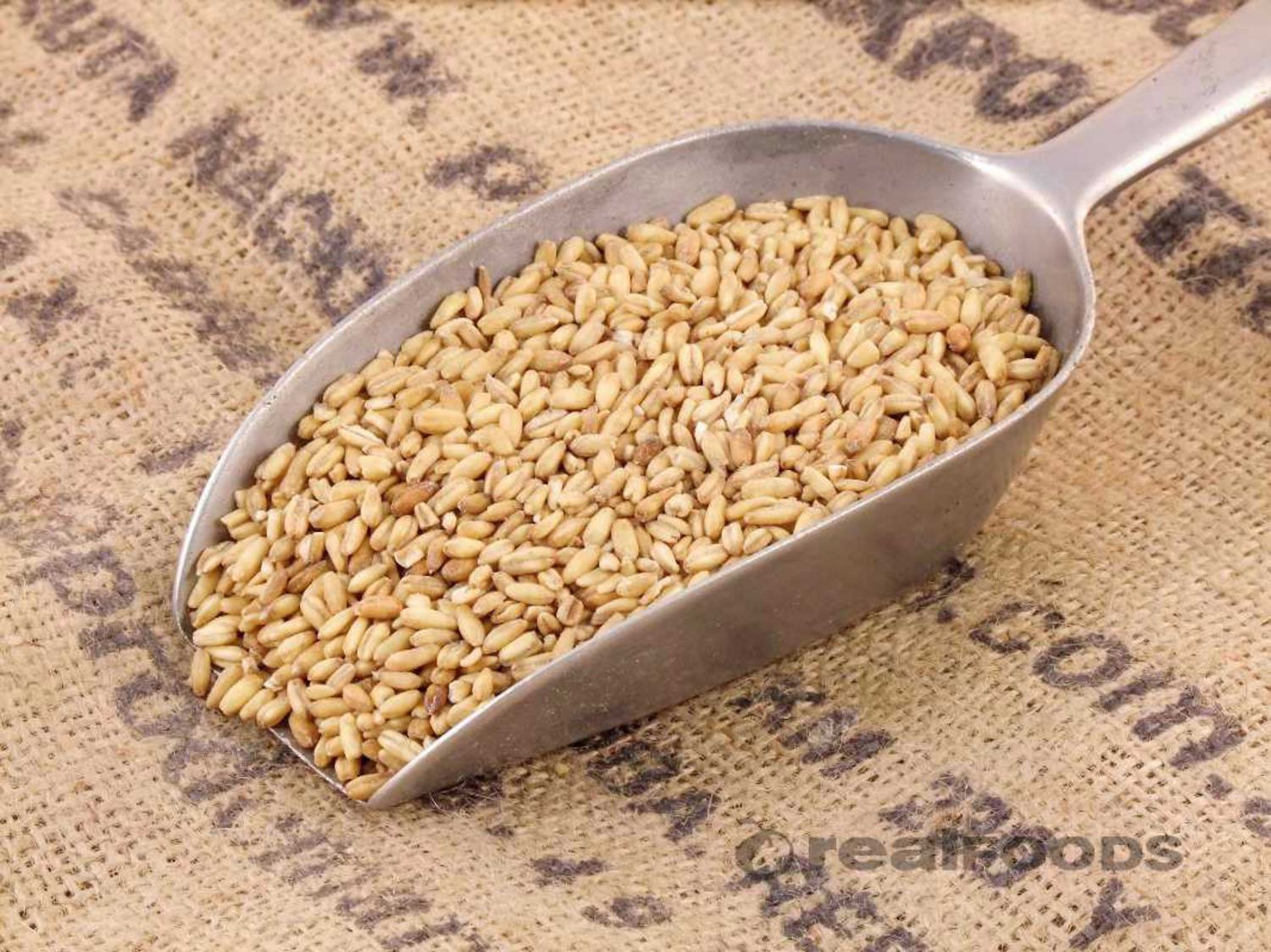
Oat groats are the whole oat grain, with only the hard unpalatable outer hull removed, but with the kernel’s outer bran layer remaining intact. They look like brown rice, long and thin with a smooth shiny surface. They can be eaten at this stage, but are often processed into other forms of oats. Groats can be used as ingredients in food processing and as a thick textural addition to a wide range of traditional savoury products such as haggis, black pudding and sausages, as well as soups and breads. Groats are also used as an ingredient in high quality animal and bird feeds. You can also make porridge with oat groats by soaking them overnight and cooking on a low heat for 20 to 30 minutes. Delicious but more time-consuming than most porridge recipes.
Oat groats are heat stabilised. This means that the oat does not go rancid (it only takes around 4 days for enzyme rancidity to occur without stabilisation). This stabilising process means that oats keep well, but also that they cannot be sprouted as the stabilisation disrupts the germ and prevents sprouting. Oat groats are not a raw food.
Rolled Oats
Rolled oats are made by steaming groats and flattening them with a roller. These come in two distinct varieties. Jumbo oats are made from oat groats, quick-cooking rolled oats are made from pinhead oats.
The first variety is sometimes called old-fashioned, or Jumbo.
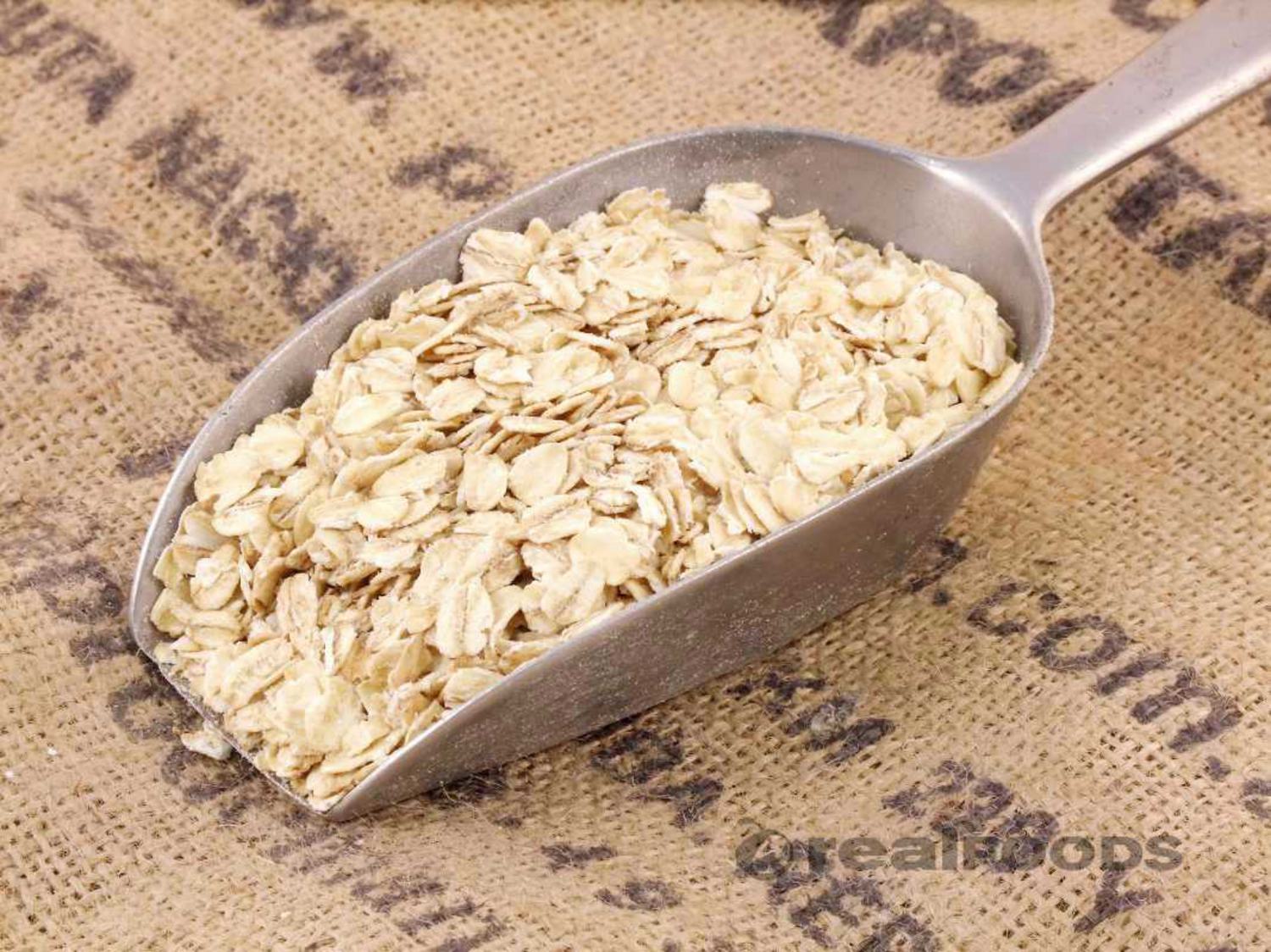
These are made by first steaming the whole groat for a few minutes, thus partially cooking it, then passing it between rollers to flatten it out. Jumbo Oats are used extensively in flapjack, confectionery, bread, cereal bars, muesli, granola and traditional porridge. They are used for traditional thick porridge with distinct oat definition. More recently the Jumbo oat has become the oat of choice for the production of Granola and Crunchy style clustered products, providing a firm crunchy texture. To cook them for porridge simply add half a pint of water (or milk) to 40 grams of jumbo oats and heat gently for 6 or 7 minutes.
The second variety is quick-cooking rolled oats, often called Porridge Oats, Flaked Oats, Quick Oats or Superfast Oats but they’re usually the same type of product:
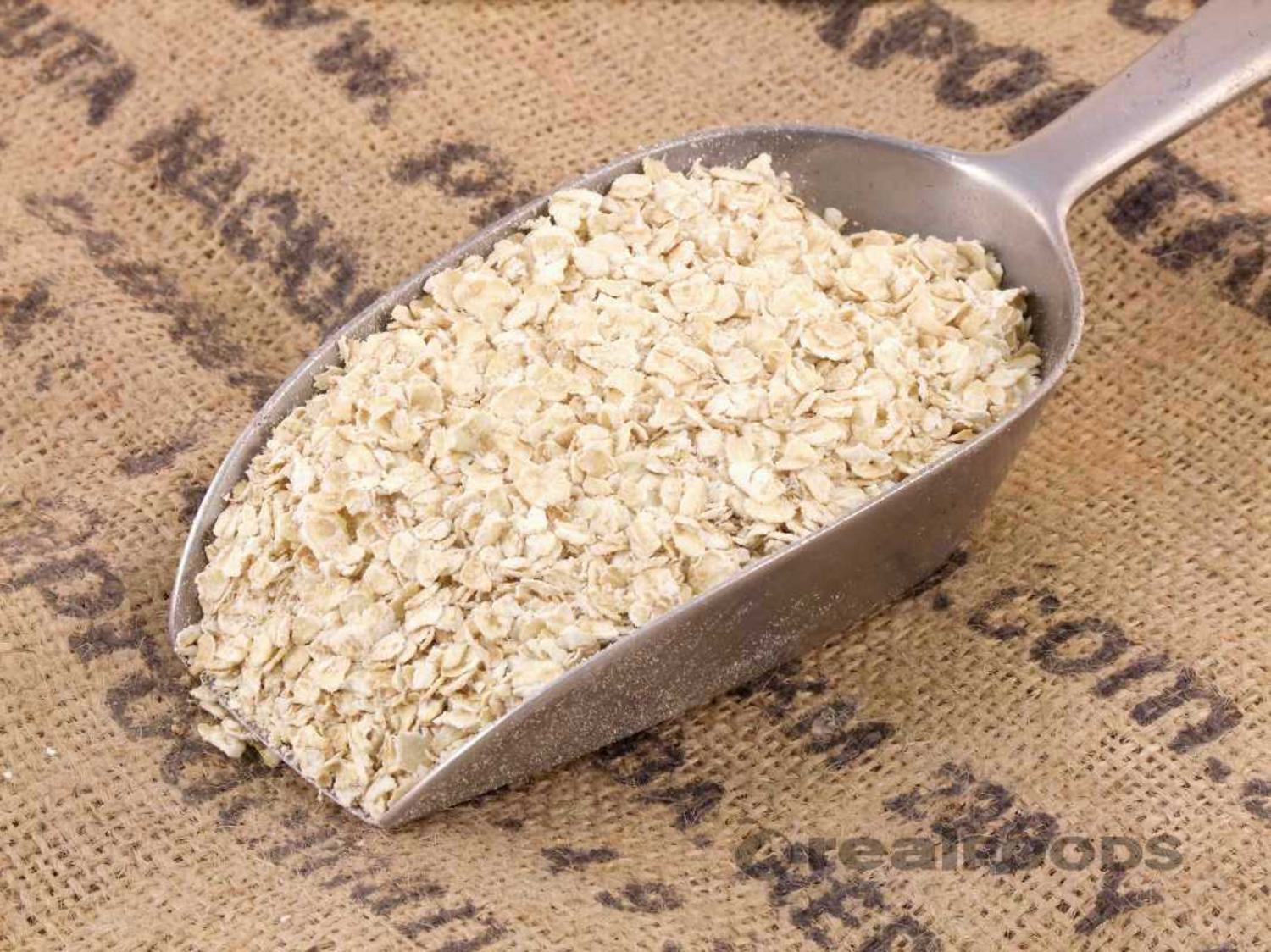
They are a very versatile wholegrain cut oat flake ideally suited to the production of porridge, muesli, flapjacks, cakes, biscuits, cereal bars, bread coatings and cheesecake bases. Porridge Oat Flakes are also often used to mix with their larger jumbo counterparts to make highly textured oatcakes, porridge or stuffing. Porridge Oat Flakes are by far the quickest way to make porridge. Add half a pint of water (or nut milk) to 40 grams of oat flakes, boil for a minute, leave to stand for a minute, stir and add any toppings you'd like.
Instant Oats
Instant oats are made in a similar fashion to rolled quick-cooking oats, except they are steamed longer and rolled more thinly. It produces the kind of oats used for making many types of ‘instant’ porridge. They don't have a great deal of nutritional value as they've been heavily processed and some nutrients are lost in the process. In addition a lot of the instant oat products have a lot of sugar and flavourings added, further reducing the benefits. Considering you can make porridge in 2 minutes with oat flakes and add your own toppings, we don't sell them!
We DO sell some great premixed porridges if you want to make your life easy. For example Stoats Porridge combines jumbo oats with porridge oats for a textured bite and smooth finish. Or Nairn's Gluten Free Porridge Sachets for an easy certified Gluten Free breakfast.
Oat Bran
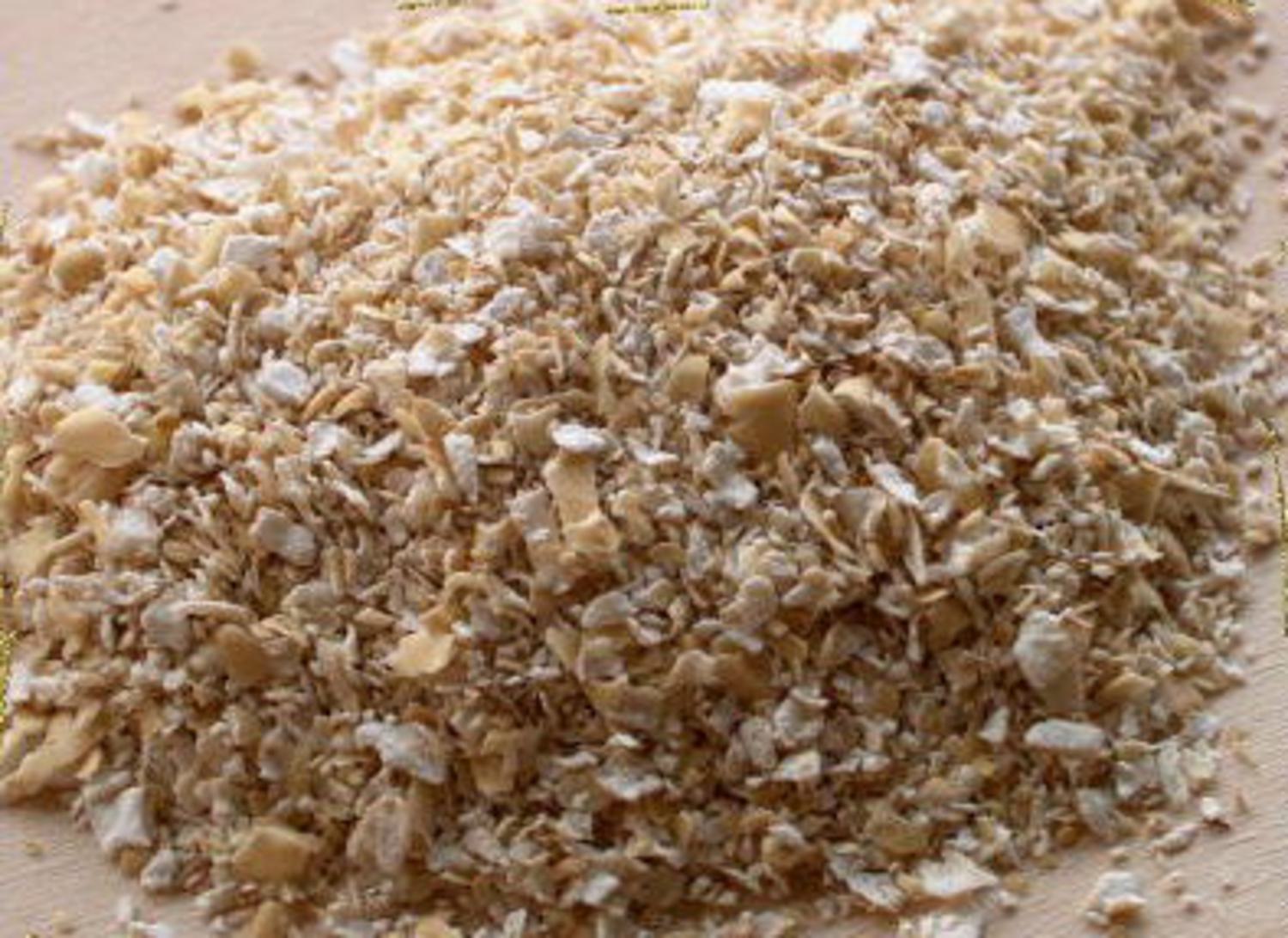
Oat bran is made from the outer skin (once the husk is removed) and is very nutritious. It is created when oat flour (oatmeal) is made from the oat endosperm (the flour-yielding part), oat groats are ground and sieved, separating the bran from the flour. Oat Bran is high in soluble fibre and is used in many products that can claim to reduce cholesterol as part of a healthy diet. It is used as an ingredient in a wide variety of baked products for both textural and fibre enhancement. These include muffins, biscuits, cakes and breads. Oat Bran is also sold directly as a topping for home baking or as a healthy eating supplement.
Oat Bran has an exceptionally high fibre content - 50% more than the average bowl of porridge (which is already high in fibre!) It is widely used by slimmers as oat bran swells in your stomach and can absorb up to 25 times its volume in liquid. This gives you a feeling of satiety or fullness. In addition, oat bran blocks the intake of calories from your intestinal tract. This slows down your uptake of glucose and can help keep blood sugar levels low and stable. People on the Dukan Diet often request oat bran.
Oat Bran can go off quickly, you're advised to keep the bran in a sealed container in a cool dark place, to prolong its life pop it in the freezer. We sell our own brand Organic Oat Bran from as little as 100 grams up to sack sizes, so you can get as little or as much as you need.
Also available is a Gluten Free Oat Bran from Bob's Red Mill, or mixed with Oat Germ for a chewier mix from Prewetts.
Oatmeal comes in different grades.
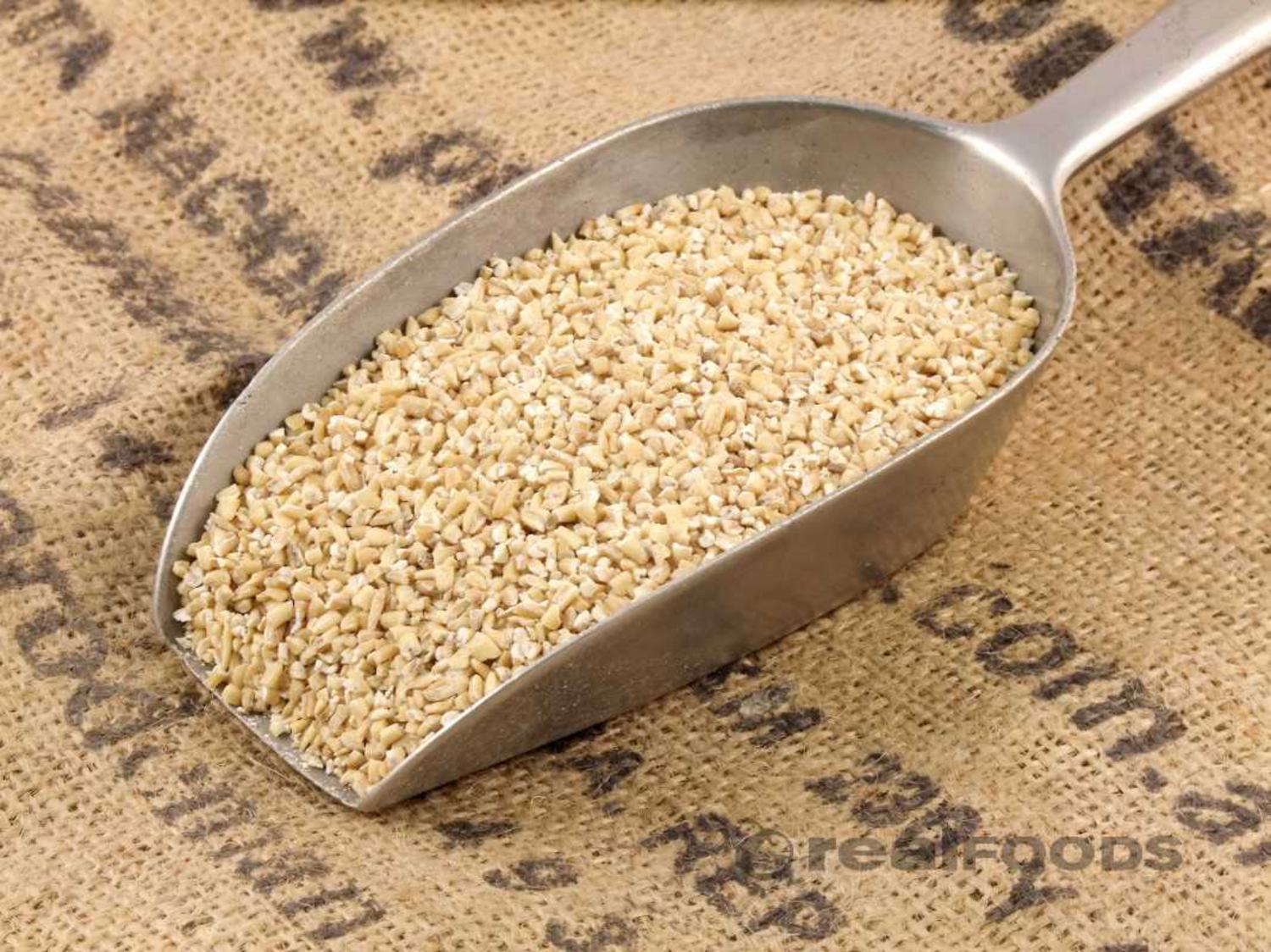
Pinhead oats or coarse oatmeal are also known as steel-cut oat groats and sometimes called Scots, Irish or rough oatmeal (though NOT you'll notice in Scotland or Ireland, where we usually call them Pinhead!) They're made by passing groats through steel cutters which chop each one into three or four pieces. Since they still contain the whole grain including the oat bran, steel-cut oats are very nutritious. It is usually used for producing savoury products such as Haggis, Black Pudding, Sausage and Stuffing mixes as well as for fish and meat coating and crumble toppings. It is particularly noted for its textural qualities, which makes it suitable for sandwich and artisan breads. They have not been steamed or rolled so thay take longer to cook (think an hour rather than ten minutes). They are not raw however as oats are heat stabilised to ensure they don't go rancid.
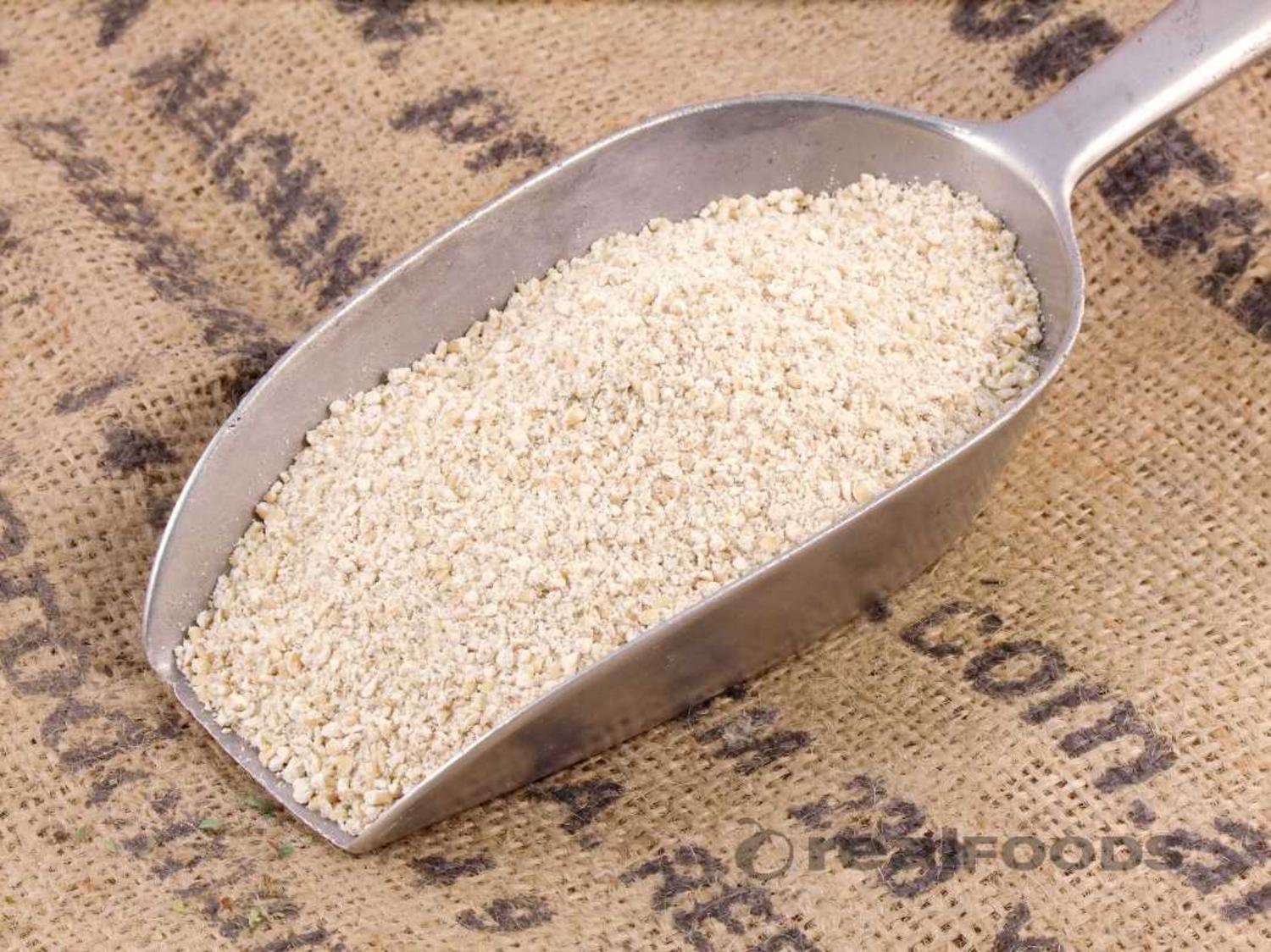
Medium oatmeal is popular for making porridge and parkin, a soft cake made with oatmeal and molasses. It has a smaller granular texture which can be used to coat foods before cooking and is good in stuffings, cranachan, oatcakes and crumble topping.
Is the finest grade of whole grain oats. Its fine smooth texture is ideal as a thickening agent, or when mixed with wheat flour will produce biscuits, bread products, cakes and other pastries. Oat Flour can also be extruded to produce cereals, shapes and snacks.
Here's a Gluten Free Oat Flour from Bob's Red mill.
Nutrition
Oats are high in potassium, have useful amounts of calcium and are also a fair source of protein whilst being high in insoluble fibre (great for healthy digestion and proven to help lower cholesterol, follow this link for more information). Oats contain beta-glucan, a carbohydrate that has been shown to lower LDL (or ‘bad’) cholesterol levels. Over 40 studies have confirmed this finding. In addition, people with hypertension and high blood pressure have been shown to have a significant reduction in blood pressure levels when adding oats to their diet. Oats are also high in ‘satiety’ value, meaning they help you feel full, ideal if you are trying to keep any on your food intake or are reducing calories. They are also moderately rich in B vitamins, B1, B2 and especially inositol, and their carbohydrates provide a long slow delivery of energy to our systems. They can be useful in preventing heart disease and maintaining healthy circulation.
Whole Oat Products (including Groats, Flakes, Jumbo)
Typical nutrition information per 100g as sold:
|
Energy
|
1545kJ/367kcal
|
|
Fat
|
6.2g
|
|
Of which is saturates
|
1.0g
|
|
Of which mono-unsaturates
|
2.5g
|
|
Of which polyunsaturates
|
2.4 g
|
|
Carbohydrate
|
60.5g
|
|
Of which is sugars
|
1.2g
|
|
Fibre
|
9.7g
|
|
Protein
|
12.3g
|
|
Salt
|
0.02g*
|
*salt content is exclusively due to the presence of naturally occurring sodium
b-Glucans 4.0g on a dry weight basis
Oatmeal/Oatflour
|
Energy
|
1599kJ/379kcal
|
|
Fat
|
6.6g
|
|
Of which saturates
|
1.1g
|
|
Of which mono-unsaturates
|
2.7g
|
|
Of which polyunsaturates
|
2.5g
|
|
Carbohydrate
|
62.6g
|
|
Of which sugars
|
1.1g
|
|
Fibre
|
9.3g
|
|
Protein
|
12.8g
|
|
Salt
|
0.02g*
|
*salt content is exclusively due to the presence of naturally occurring sodium.
Nutritional analysis carried out on 2013 new season oats.
Gluten Free
Oats are naturally Gluten Free but as they are frequently in contact with wheat, rye or barley, whether in growing, milling or processing, they are not suitable for coeliacs or people avoiding all gluten. The protein in oats is called avenin, which is similar to gluten, some coeliacs have been found to react to it, consult your doctor if you are unsure. There is a range of certified Gluten Free oats available. Bob’s Red Mill grow their oats on dedicated oat-growing fields, here's a link to their Rolled Oats, Try Amisa Porridge Oats or Alara Pure Oats for a guaranteed Gluten Free porridge. Or try Amisa's Apple and Cinnamon Porridge Oats for an easy, tasty breakfast. Here's a link to all the Gluten Free oats available in our webshop. Do remember if you are avoiding gluten, you can use our filter, simply click on the drop down 'filter our shop' option on the left-hand side of our webshop and all the products you will see will be suitable.
Raw
A raw food diet, which is usually vegetarian or vegan, consists of completely raw or slightly heated vegetables, fruit, nuts, seeds, sprouted grain, herbs and sea vegetables. It’s sometimes called a living food diet, because the live enzymes in the food remain intact in uncooked food. Raw foodists contend live food is a purer, better source of energy. Sun & Seed are activating (sprouting) their raw hulled oats, then dehydrating them below 40 degrees Celsius, find the Raw Oats here.
Soaking or fermenting
Many people advise soaking or fermeting the oats first. This is because every grain holds phytic acid in its outer layer. When we eat phytic acid, it binds with calcium, copper, iron magnesium and zinc in our bodies – so we are unable to absorb these minerals. Soaking oats in warm water with a spoonful of yoghurt or kefir for at least seven hours at room temperature allows the enzymes to break down and neutralise the phytic acid. You can put the ingredients in the saucepan the night before and leave it on the hob overnight. In the morning, cook the porridge for 5 minutes. It is creamy and delicious – and even better for you than unsoaked porridge. The general rule is 1 cup of oats to 1 tablespoon of yoghurt/kefir.
Recipes
Here's a link to our recipes with oats in them. Bannocks are a traditional scottish oat flatbread, made on a griddle or a heavy frying pan, they're a fore-runner of the ubiquitous oatcake! Or try making Cranberry Oat Bars for a delicious snack.
By Kim Betney